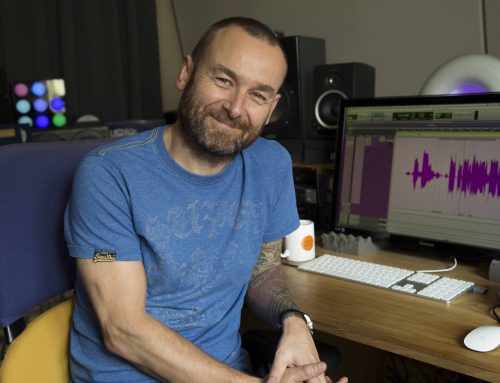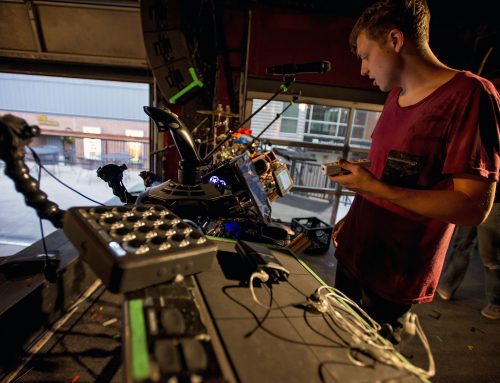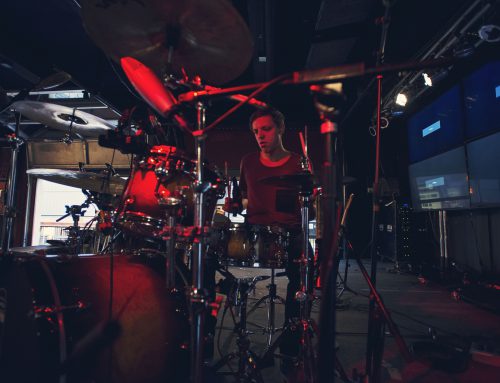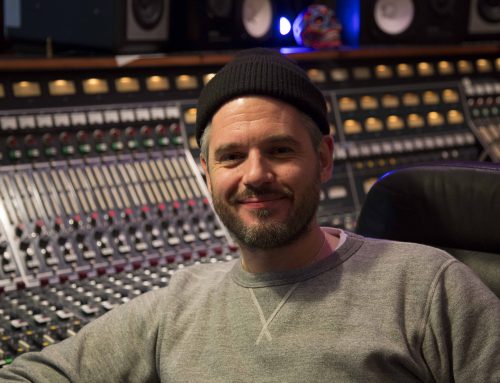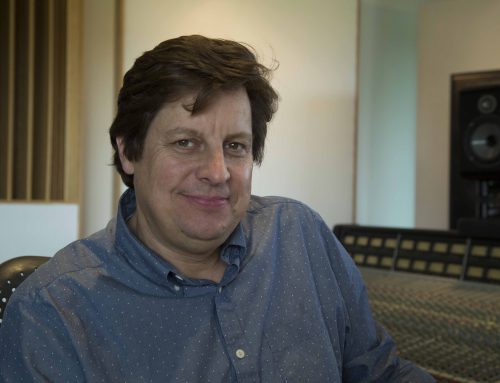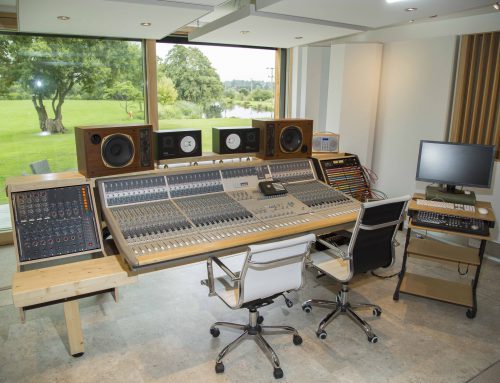Toby Marks had been happily using both hardware and software to produce Banco De Gaia albums for more than ten years, when he decided to abandoned all of his hardware synths, processors and samplers in favour of a computer based system. Toby explains the reasons why it was out with the old and in with the new.
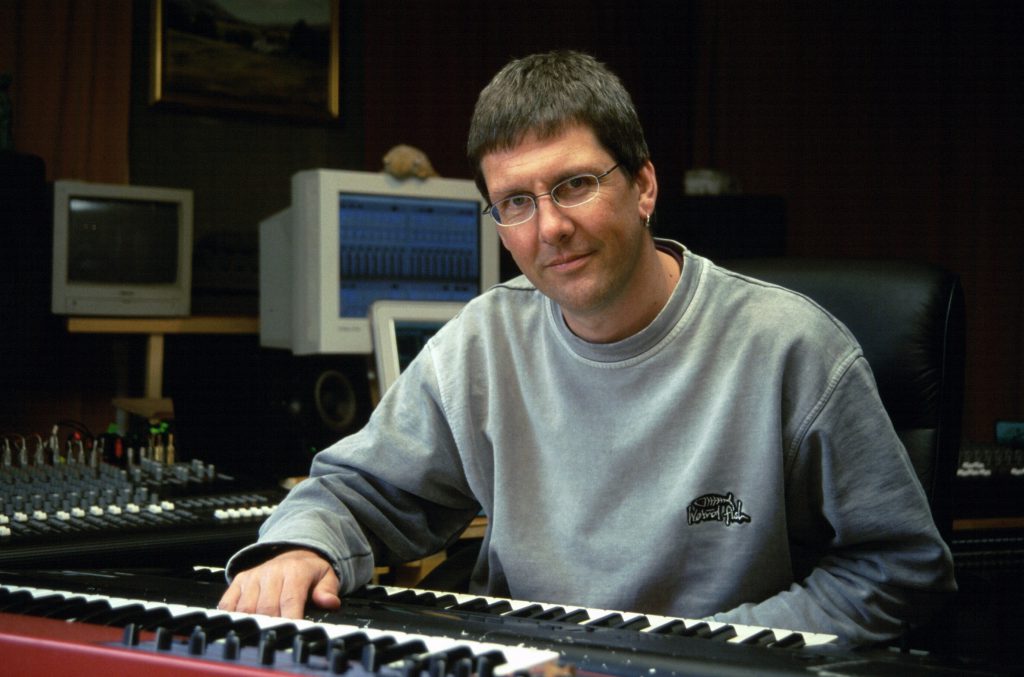
Toby in his studio
“About 99 percent of this album was done in the computer, but I doubt if there was a single soft synth on any of the albums before this one,” explains Toby Marks, referring to his 2004 Banco De Gaia album, You Are Here. “I didn’t set out to use just soft synths and a computer, but once I started working on the first tune, I found that every time I wanted to do something I was thinking ‘I bet Absynth will be good for that, or FM7 can do this.’ A few years ago I wouldn’t have wanted the sound of a software studio, but one of the reasons this album has been recorded in the way it has is because that technology has got so good.”
By the time You Are Here was complete, the only sounds that originated from Toby’s impressive collection of audio hardware were an arpeggio generated by a Korg MS2000 synthesizer and a tone produced by a Clavia Nord Lead synth. “I really wanted to use a particular sound from the Nord,” Toby explains, “and I used the Korg MS2000 arpeggio purely because I could quickly and easily set up the arpeggiator and, at that point, I hadn’t used the arpeggiator in Logic and didn’t want to stop working on the song to do some learning that day!”
Real Voices
Apart from some sample-based vocal parts used in the album’s opening track, ‘Down From the Mountain’ live vocals do still play an important role on some of the other tracks. On both ‘Gray Over Gray’ and ‘Tongue In Chic’ the vocals were performed by Jennifer Folker, whilst Julie Daske added her voice to the other tracks.
“Basically I let them get on with it,” says Toby. “The first vocal song, ‘Grey Over Grey’, was improvised, and done in one take, apart from a slight glitch at the start which I had to clean out. I was in Seattle to play a gig and I’d already met up with Jennifer to record her vocals for the track ‘Tongue In Chic’, but as I sat in the hotel room before my gig I though it would be nice to get her to sing something else while I was nearby. I fired up Logic and put together a four chord pattern using an EXS24 piano, and then added a held chord of a pad sound in synth. I looped both the piano and pad part and then all I was doing was opening up the filters in NI’s Absynth to get a bit of movement into the backing. When I met Jennifer the next day I asked her if she wanted to improvise over the top.
“I considered just leaving it there but it was literally just a piano, pad and singer so, although those elements still form the basis, I developed the track further back at home. I still left the vocal quite raw because, although we live in the age of Autotune, I wanted the sound of someone being absolutely real and expressing their deep feelings.
“The other song we did in Seattle, ‘Tongue In Chic’, had backing which I had sent over to Jennifer before, and that was actually the track we had planned to work on while I was over there. We ended up discussing the current state of the pop industry and the involvement of fashion through the lyrics. We figured it would be fun to release this catchy pop song which is actually fundamentally about vacuous catchy pop songs!”
For the custom vocal parts Toby used a mobile setup comprising two mics, a laptop and a Focusrite ISA220 interface. A Digigram VX Pocket card was also installed in the laptop which allowed S/PDIF interfacing between the ISA and the laptop. The vocal microphones were plugged directly into the ISA which acted as a compressor and preamp. “Jennifer’s vocal parts were performed in a studio in Portland,” says Toby, “but I was still using the laptop and ISA for recording and processing. We took the audio from the ISA220 into the studio desk for her monitor and, at the same time, fed the digital signal into my computer. I applied a little bit of compression from the ISA220 to control the peaks, but made sure it was as little as I could get away with, and there was no EQ. I quite like the ISA’s compressor because it’s quite clean and not like a special-effects compressor.
“I also did do some recording of a Bazooki player, which I didn’t use it in the end, and he just took a headphone feed from the analogue out of the VX Pocket card.”
Despite the computer bias of the album, Toby never considered going the whole hog, and using software like Vocaloid’s Leon or Lola to generate artificial voices. “When I heard about Vocaloid my initial reaction was ‘why are they bothering to make this product?” Toby admits. “There are millions of vocalists out there, they are all looking for work and it doesn’t cost much to hire a singer for a few hours. However, although I wouldn’t consider using Vocaloid to replace a vocalist, I am interested in it as an effect, and can imagine it being useful in that context. For example, I used a sample of a Nepalese vocal on the first track because the timing and phrasing was quite unusual.”
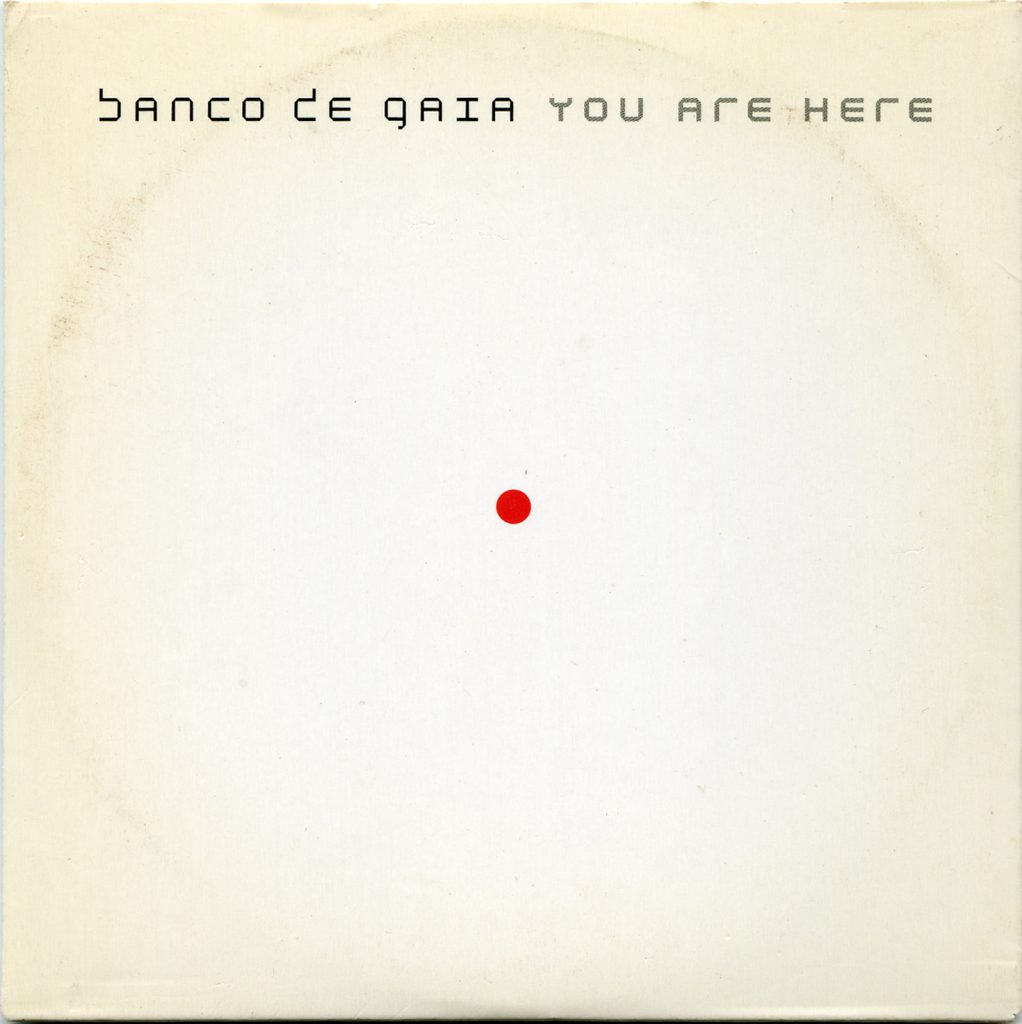
You Are Here artwork
And The Rest
The rest of the You Are Here was recorded using Toby’s Apple Mac G4 867 Dual Processor, running Emagic’s Logic Audio v6.3 and EXS24 sampler, not to mention a host of software synths and processors. EXS24 replaced Toby’s much loved S-series Roland samplers, while soft synths provided the sounds previously extracted from hardware synthesizers. Toby explains how the setup evolved.
“At the beginning of the ’90s I had an Atari running Notator, but then I moved on to an early Power Mac G3, and later a G4 running Logic Audio, so I’ve always been running some permutation of Logic. But when I got hold of Logic Audio back in ’95, I didn’t use the audio aspect of it at all. The first time I really used the audio was for the long saxophone part played by Dick Parry on my Big Men Cry album.
“I’d developed a successful way of working using several Roland hardware samplers having fallen in love with sampling when I got a Roland S550. I supplemented that with a Roland S750, and later an S770. Interestingly, they provided off-line compression which was very transparent. You entered the parameters, hit go, and it compressed the samples and allowed you to get some really high signals. I also liked the filters, and the D-A converters which, in my opinion, were way better than those of the equivalent Akai samplers.
“I used to base everything around the samplers, which offered me 48 separate MIDI channels, 24 outputs and over 50MB of RAM. I could pile up sample after sample using some really long phrases. When I got Logic Audio I carried on using the Roland samplers because I could work quickly and comfortably with them and that worked fine for the first three or four albums, however, I always had three mice on the desk instead of one and four screens to look at instead of two!
“I started using the audio recording in Logic on my last album, Igizeh, back in 2000, because I was getting into longer phrases recorded at higher quality, so some things were just too big to be used in the sampler. I still didn’t have the EXS24 sampler back then so I was just using Logic’s audio tracks. On You Are Here I specifically set out to use EXS24 rather than the Roland samplers because having 24 outputs all with an earth loop no longer seems so attractive.
“I hadn’t used soft synths much prior to this album and I wasn’t convinced that they were particularly good. I’d played around with Absynth and found it very interesting, and I’d fiddled about with other bits and pieces on remixes, but I hadn’t come to the conclusion that I could get all the sounds I wanted that way. But once I started I found that, especially with all the processing and effects, I didn’t even bother looking at the patch-bay.
“Before getting into soft synths I had a Roland Juno 106, an Oberheim Matrix 1000, a Clavia Nord Lead and also a Roland Jupiter 8. The JP8 had a lot of features and a great sound, and I really miss not having that anymore.”

Toby’s computer desk at the time of You Are Here in 2004. His largely redundant mixers sit either side
Soft Synths
The soft synths which Toby used on You Are Here were largely Native Instruments products, purchased together as a bundle deal. Toby explains which bits of software proved most useful in the making of his album, and describes how they were used.
“I used FM7 quite a lot. At first I thought it might come in useful every now and then but, because so much software is trying to emulate analogue synths, having one which is deliberately trying to be digital really filled a gap.
“I also like Battery, which is a software drum machine. For ages I’d wanted to go back to working with a drum machine with a set of pads or keys with a sound on each, rather than a full-on sampler. I find that Battery makes it a lot quicker to start working with drum loop ideas and there are some pretty nice sounds in there.
“I’ve also been using Steinberg’s Model E for a few things. I think it’s supposed to be emulating a Minimoog, although I haven’t had my hands the real thing to compare. Whether it is similar or not, it’s great in its own right. Every now and then it suddenly portamentos up an octave for no apparent reason, nevertheless, it’s great for analogue randomness.
“Antares Kantos is another useful bit of software. It’s triggered from an audio input source rather than MIDI messages. It then takes the pitch and timbre information and uses it to control the sound. One reviewer described the user interface as being like snot in outer space, which is true because it is pretty horrible to look at, but, although it is very unpredictable, it can work really well. For example, on one track I fed a vocal line into it and it created a weird and unsettling burbling noise in the background, which followed the vocal it was triggered from. So that proved useful for unusual atmospheres and textures.”
For Toby’s music, which has a close affinity with the dance music genre, effective bass sounds are very important. Nevertheless, Toby’s bass-generating analogue synths were adequately replaced by Logic’s own sound generators. Toby: “For quite a lot of bass parts I used the ESM, ESP and ESE synths which come bundled free with Logic v6. I was really surprised how good they were. They are basic little synths: ESM is a mono synth, with a very simple filter and a choice of two waveforms and ESP is a slightly more advanced version, but I got quite a lot of useable sounds out of them. I found that using a simple sine or square wave and then tweaking it a little was all I needed to do – I didn’t need to apply any clever filtering.
“I like to work fast and I don’t like to get bogged down with tweaking sounds, so I find that if I start with a simple thing then I don’t spend ages tweaking every single parameter to see if can improve the sound. I just get a good solid sound and leave it.”
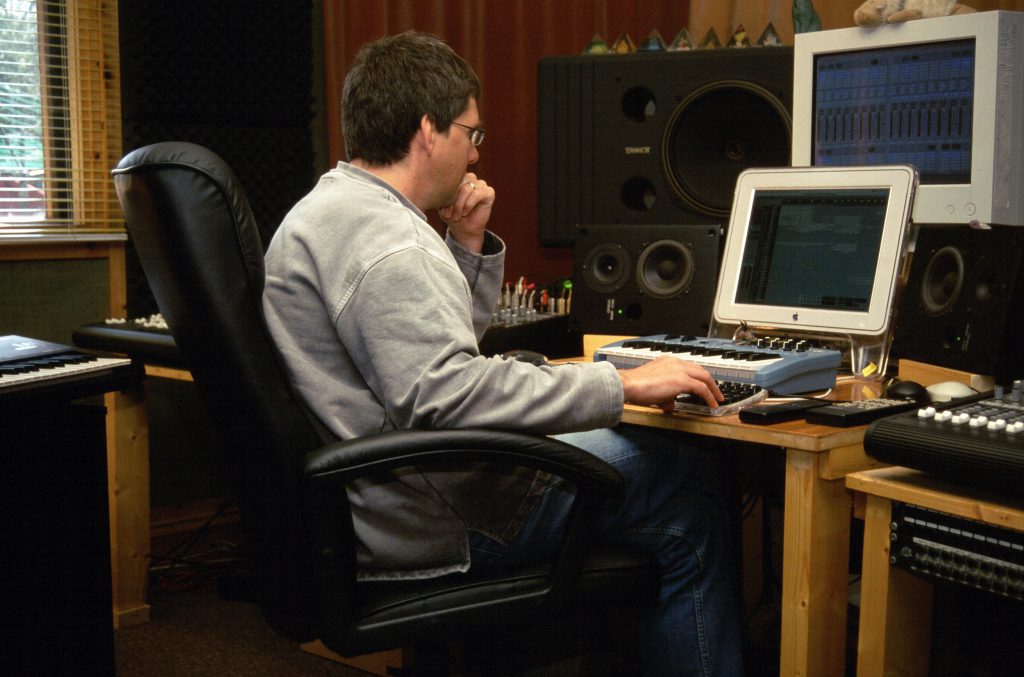
Toby at work
Waiting For A Buss
For many years, Toby had produced his albums using a sizeable Mackie analogue desk which is now largely redundant, thanks to the introduction of Logic Audio’s mixer. Toby reflects on the pros and cons of mixing in software.
“I miss having effect-sends on the busses, although there are various work-arounds in Logic. For example, I sometimes route stuff from one channel to a buss and then out of there into another buss, just to get the sequence I want. I like to send things, like backing vocals, as a sub-group to one buss so that I can use a specific reverb or processor on those sources, separate from the global processing that I am using on the rest of the track. I usually strap the relevant processor across the buss in question and route all the things I want to use with that processor through that buss.
“For example, the drums on ‘Waking Up In Wako’, which were largely from Battery, needed a really harsh, over-the-top compressed sound. I routed the drums and some sub-bass sounds through the IK Multimedia T-Racks compressor, but decided that the effect wasn’t really enough, so I sent that output to another buss and strapped Waves Renaissance Compressor across it and cranked that compressor right up. Then I decided that some of the sounds within the group needed a bit more processing, so I routed them to another intermediate buss, which had another compressor or limiter across it. Finally I bussed those sounds back together with the others so that they all went into the Renaissance buss, so the end result was pretty compressed! That was so much easier to do than crawling around on the floor, patching and re-patching leads and wondering which cables were working and where the mains loop was coming from!
“I’d never had total recall before, but I used to hate working on a tune and then spending an hour writing out all the track sheets and backing up all the samples on different drives and machines. So being able to open up one file and know that everything will be where it was left is great, and it means that you get into creating some really complex routings. The only downside is that when I come back to a mix a month later to make some final tweaks, I often don’t have a clue what is going on and end up having to solo stuff left, right and centre to work out why there is a certain buss on a particular compressor, or what an EQ is supposed to be doing.
“I’ve always enjoyed getting my hands on the desk and doing dub-style mixes by tweaking stuff in real time, but I’ve found myself using the automation loads because the joy of using automation is that you can store it and fine tune it. It’s like having 30-pairs of hands. I like to fiddle with things so I’ll be winding up the filter on one synth while changing the reverb decay time of another part, adjusting an EQ somewhere else, and dropping the level of another track. That would be impossible to do in real time.
“The automation, more than anything else, has caused me to change my way of working, particularly when it is used with a complex synth like Absynth. For example, with a hardware synth I might be programming a patch where an LFO is modulating a filter to get some movement into the sound, but with automation I can just set up a patch and then draw in some automation to modulate the filter. Doing it that way has introduced a lot more randomness because the sounds are not fixed in the same way, and I can be modulating five or six parameters at once. I never got anywhere near the depth of programming that I have with the soft synths when I was using hardware synths; I just didn’t attempt such complex routing.
“However, when I came to do the final mixing I really missed having a desk. With a desk, if I just wanted to EQ a kick drum or whatever I could lean over, tweak a knob and hear the change as I was doing it. It is not the same as scrolling across the screen, finding the right parameter and adjusting it, even though, theoretically, you get the same result.
“Someone said to me that the danger with computers is that you end up mixing with your eyes and not your ears. And that is so true because when I am leaning over and twisting a pot, I am not even looking at where the arrow is pointing, but when you are looking at the screen it is so easy to think ‘I’d better set this to such and such a Decibel setting.’
“Unfortunately, a lot of the control surfaces don’t have the controls I want. It will be interesting to see if anyone brings out a modular channel strip with eight pots, so that you can add as many channels as you want. In that scenario you could use just one pot for everything and simply change what parameter it is affecting. Or have that permanently assigned to channel one, and build up a row of controls for the other channels.”
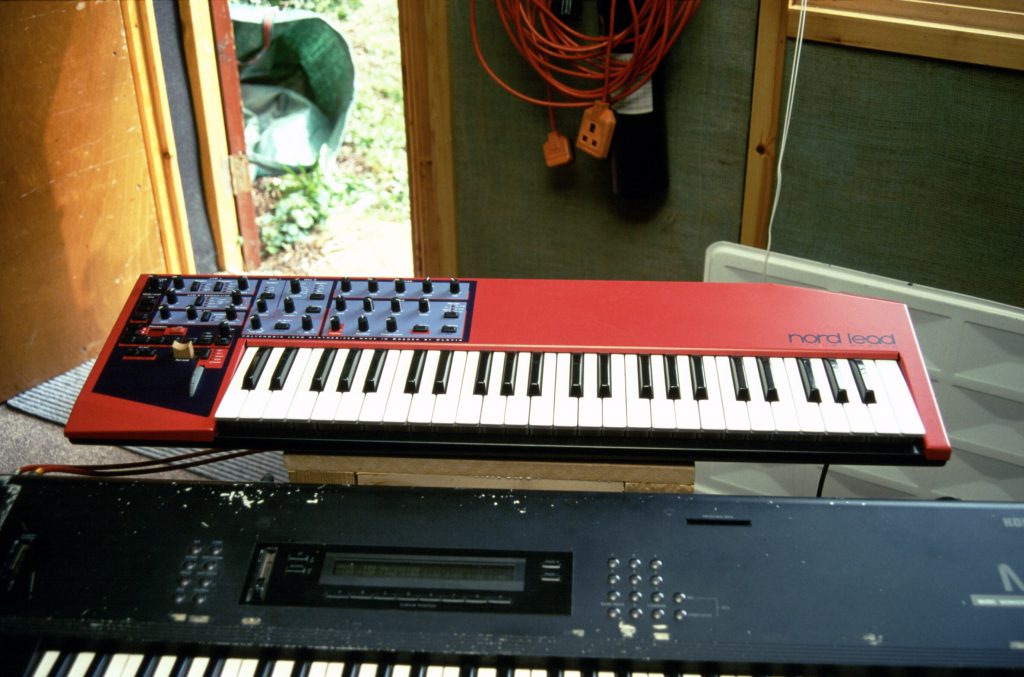
Toby’s Clavia Nord Lead, one of the only ‘real’ instruments used on the album
Close to the Limit
Having moved from a situation where separate instruments, desks and recording devices were powered by their own processors, to one where soft synths, recording, processing and mixing programmes were all running from the same computer processor, Toby found that he had to consider the issue of CPU limitations. He explains how it affected his way of working.
“When I began the project I was still using Logic version 5. Until then I’d assumed that after using three or four decent synths and reverbs that would be it, but I found that once I’d used a compressor on one track, I could use the same one elsewhere and, rather than doubling CPU usage, it just added a small percentage to the total. Once I realised how many plug-ins I could get away with, I had loads of them working, but occasionally I had to bounce stuff down as audio because programs like Absynth chewed up a lot of the processor.
“Bouncing down can be a problem if you need to make a slight tweak to a track because you have to do it all again. However, Logic 6 introduced the ‘Freeze’ function which automatically bounces the processed track to audio, and then takes all relevant the plug-ins off line. Suddenly having the option of freezing loads of tracks meant that I always seemed to have just enough processing power to bring in another synth.
“Freeze also keeps track of everything, so if you undo the Freeze, everything is set up as it was before. The down side of that is that if you’ve frozen a couple of tracks and you later decide to change one of them you’ll probably have to mute some of the other tracks to do so because it will need to gain back the processing power. Freeze is a great labour-saving tool, but it doesn’t give you any more power. Nevertheless, I had one track on the album where almost every track was frozen, so it did prove useful.”
Using Samples
When making an album predominantly in the software domain, using samples can be a great way to add texture and variety to compositions, otherwise full of soft synth sounds. Toby describes the way he integrated sampled material into tracks on the album.
“I used a bazooki sample on the track ‘Zeus No Like Techno’, even though, as I said earlier, I recorded a real Bazooki player. It was the old problem of balance: I started with the sample with the intention of taking the sample out and replacing it, but the real instrument didn’t sound quite right. I can’t be sure if that was because I’d become used to the sound of the sample by that time.
”Over the years I’ve worked with a lot of real instruments which I’ve placed over the top of electronically generated sounds, and have found various ways of making the two things sit together, so I always knew that I would have to process it quite heavily to get it sitting comfortably. Sometimes an unprocessed sound can work great, but often you need some sort of modulation going on. In this case I couldn’t get the real bazooka to sound like it was meant to be there because whatever I did to it sounded either under processed or over processed. Even the sample I used required loads of processing. The bazooka is an odd instrument because it has a very distinctive EQ curve, and it’s very easy to make it sound like a cheap guitar. I can’t remember exactly what I did but I probably chorused it, flanged it, delayed it a bit, and used very harsh EQ-ing. One day I’d like to do a very clean album using acoustic sources, and have the electronic instruments bend to fit the acoustic parts!
“I often get to a point in a track where I know that something needs to happen or change. For example, on the track ‘Waking Up In Wako’, I needed another element, but there wasn’t room for another string or synth part, so I decided to use something percussive. I didn’t want to add any more percussion instruments, so I tried some vocal breath samples I had kept to one side. As I added each one to the composition they made an interesting rhythmical cycle, so I decided it would be great to end the song by fading out the rest of the tune to leave them. Ending a track can be a challenge, and three minute pop songs often just fade, but I find that taking certain parts out to leave others can be a way to end a tune without fading out or being too abrupt.
”I used string samples quite heavily on the track ‘Gray Over Gray’, which were from Miroslav Vitous’ orchestral library. They are very nice, and did the job perfectly, even though the collection must be ten years old now. I’ve always wanted to work with real strings but, bearing in mind budget and time, it works just as well doing the job with samples.
“I had a dilemma, as to whether I should leave them unprocessed and try to program them to sound like a real string quartet, or process them a so they were a bit more trip-hop. In the end it didn’t seem right to have this string quartet appear out of nowhere so I added effects. The original samples had quite a lot of vibrato articulation anyway but I think I introduced some kind of phasing on their sub group.”
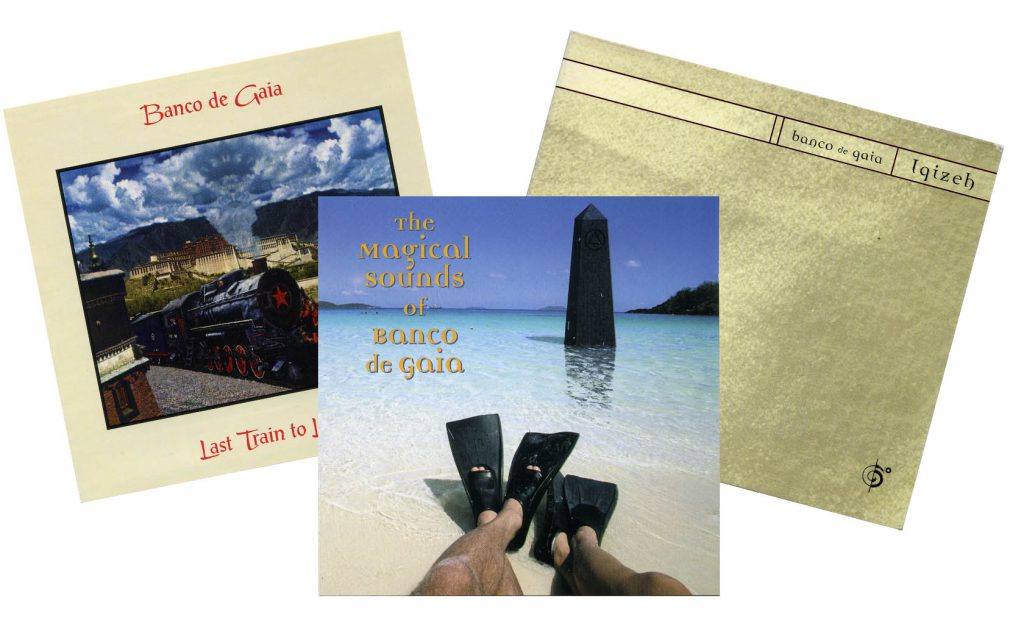
Three Banco de Gaia albums: Last Train to Lhasa (1995), The Magical Sounds of Banco de Gaia (1999) and Igizeh (2000)
Treating It Right
One of the most important aspects of Toby’s work is his careful use of effects. Indeed, it would be impossible to create the ambient dub music in which he specialises, without paying particular attention to the programming of delays and reverbs. Toby describes some of his thoughts about effects and how they are best used.
“One thing that interested me when I started getting into reverb programming and looking at how reverbs were made up, rather than just switching on a preset, was how often the patch has quite a low-pass filter on it, down at about six or eight KHz. I’m talking about decent reverbs like Waves Renaissance Reverb or Trueverb, or any that are modelled on real places and plates. At first I wondered why on earth anyone would deliberately be hacking off all that top end information, but it is because it sounds right. When you listen to a Beatles album you notice that everything is pristinely positioned, but the frequency range of the material is not that great. Of course, they were limited by what the technology could do, but when technology improved to allow you to take your reverb tail right up, they thought ‘No!’ That’s because the old producers and engineers knew which limitations worked.
“And with all these options, if you are not a trained engineer, or you don’t realise how these options and extended area are best used, it does lead to problems. You can’t treat every part of the frequency equally or you probably won’t get far.
“Towards the end of this project I got hold of Space Designer convolution reverb which eats a lot of my processing power, so I couldn’t use it too heavily. But initially I thought that it was great and much nicer than the reverbs I’d been using up to that point, so I decided to use it to replace all the existing reverbs. However, I soon realised that it would be ridiculous to do so because all the tunes had been created with a particular balance, which would go out the window with a new reverb, so I decided to leave most of the reverbs as they were and to focus on the lead vocal where it would be most noticeable.
“On several tracks I did use the Space Designer reverb, and was glad to have a richer, deeper and more polished reverb, but it didn’t always make much difference, and it wasn’t necessarily the sound that I had wanted.
“I remember listening to Never Mind The Bollocks by the Sex Pistols years and years ago and suddenly realising that the guitars were chorused, it was really carefully produced, and that was why it sounded so good. So whether you want something to sound really rough or really polished, you still have to be careful how you do that. Sometimes the most obvious things aren’t those that work.”
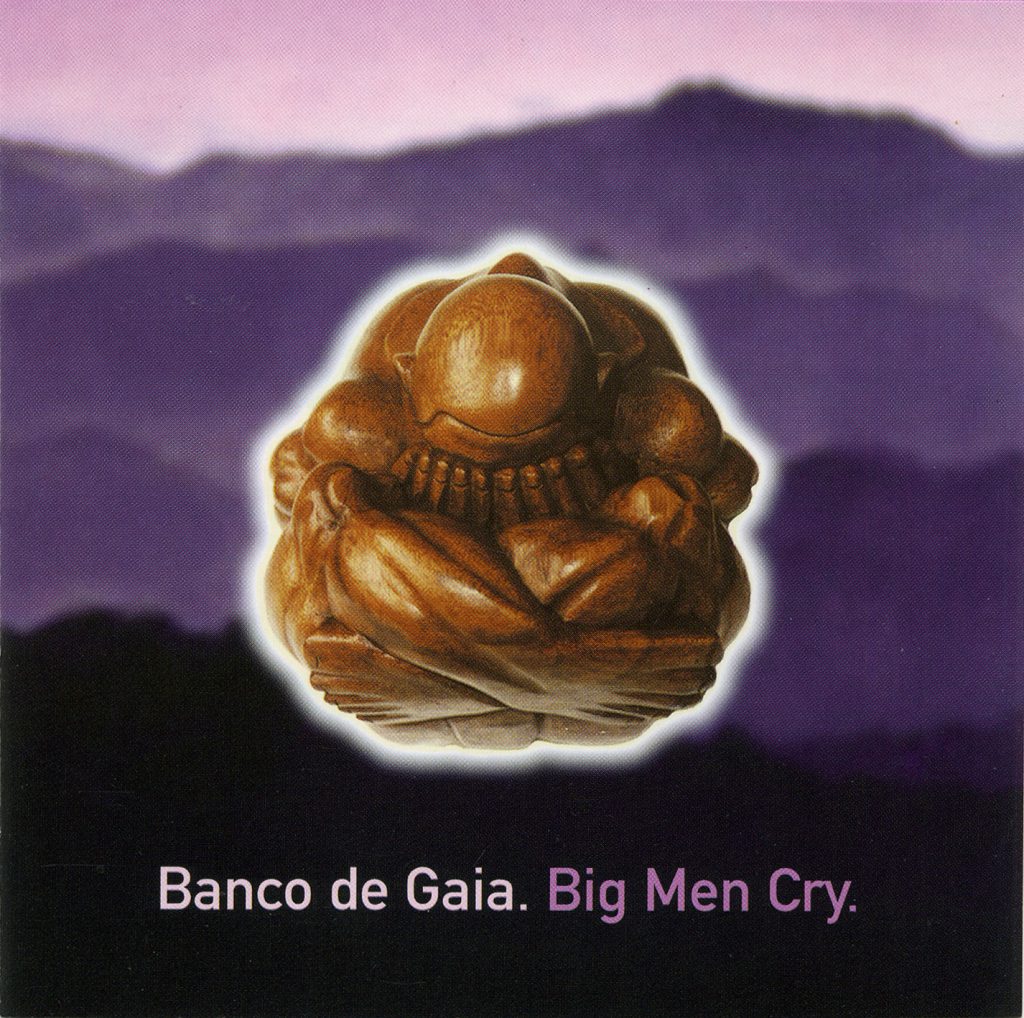
Banco de Gaia’s Big Men Cry, released in 1997 and Maya from 1994
Sound Values
Ultimately, it doesn’t matter how a record is produced, as long as the end result – the music – doesn’t suffer because of the production method. Naturally, Toby has compared the process of recording You Are Here to his previous albums.
“I wasn’t aware of it at first,” he says, “but I’ve been told that the album sounds much more contemporary than the last one. I don’t actually like a lot of the harsher styles of electronic music about at the moment. I’ve notice that a lot of today’s tracks are getting more and more harsh and edgy in the top end and are sounding more digital. That harsh sound seems to have become a fashion in hip-hop, for example, and people are deliberately trying to get that sound, whereas a few years ago we were trying to get rid of it!
“So I’d previously carried on using early ‘90s hardware out of choice. But for this album I decided to ensure that it did not sound like it could have been made five or ten years ago. I know my career has gone on a long time and some people have preconceptions because of that, so I was trying to incorporate the best aspects of digital technology into my style of music.
“Keeping the background noise as low as possible was a constant problem with outboard gear. The end of every finished mix used to involve me going through and working out the order in which I’d mute or un-mute the desk channels.
Ironically, mastering the album made me realise how horribly clean the recording had actually become. Jon Dent, the mastering engineer, and I decided to master through analogue processors because everything had been digital up to that point, and he has some really nice processors. On previous albums, which had used hardware recording devices, any noise Jon had added had been negligible, but when you take a totally clean recording and stick it through an analogue EQ, the noise suddenly leaps out at you. However, I found that this time it really humanised the sound.
“So a lot of the character of this recording has come from the final mastering process, but it looks like I’ll be doing an SACD version of this album, which means that we are going to go back and re-master in surround. At that point it will be interesting to see what the engineers decide to do. On the one hand they will be using the stereo master as their reference, but they will also be working with the clean pre-mastered tracks.
“They’ll also be working at 24-bit and that will be interesting because, even when I was mastering to DAT, I always thought that the finished 16-bit masters didn’t sound as good as the DATs. Now that I am used to recording at 24-bit the downgrade to 16-bit is even more noticeable, so it will be interesting to find out what can be done for SACD.
“I don’t think I would like to go much further in the computer direction, although I don’t think I’d go back to using piles of hardware samplers, synths and effects. Even if there are effects that are not yet available in software, it seems to me that every month someone somewhere is producing a new plug-in that is a better emulation, and more affordable. I can see that convolving reverbs are going to change things to the point where a Lexicon 480 will no longer be the best option out there.
“I did miss the Jupiter 8 because it was such an analogue-sounding thing, and none of the things like Absynth, Model E, FM7 or Pro 5, can do that. I’ve not yet heard any plug-in that can emulate that warmth, but, on the other hand, they can give you this incredibly fizzy top end. I’ve already been selling off hardware, but what I really still want is a hardware control surface.”
Mobile Future
Now that the majority of Toby’s hardware is redundant, creating a powerful mobile studio based around a single laptop has become a possibility. Many Banco tracks incorporate ethnic samples from around the world yet, up until now, these have either been sourced from CD or recorded on location and edited back in the studio. Toby considers the possibility of recording, editing and mixing on the move.
“If I get a new more powerful laptop I’d like to travel with a mobile setup. I love the idea of having just a laptop, preamp and mic, but the one thing that hasn’t changed is the need for a good monitoring environment to get the best out of this stuff. A pair of headphones is never going to do that. Grabbing a singer or instrumentalist is not a problem, but I think I’d always need that listening base to go back to.” TF
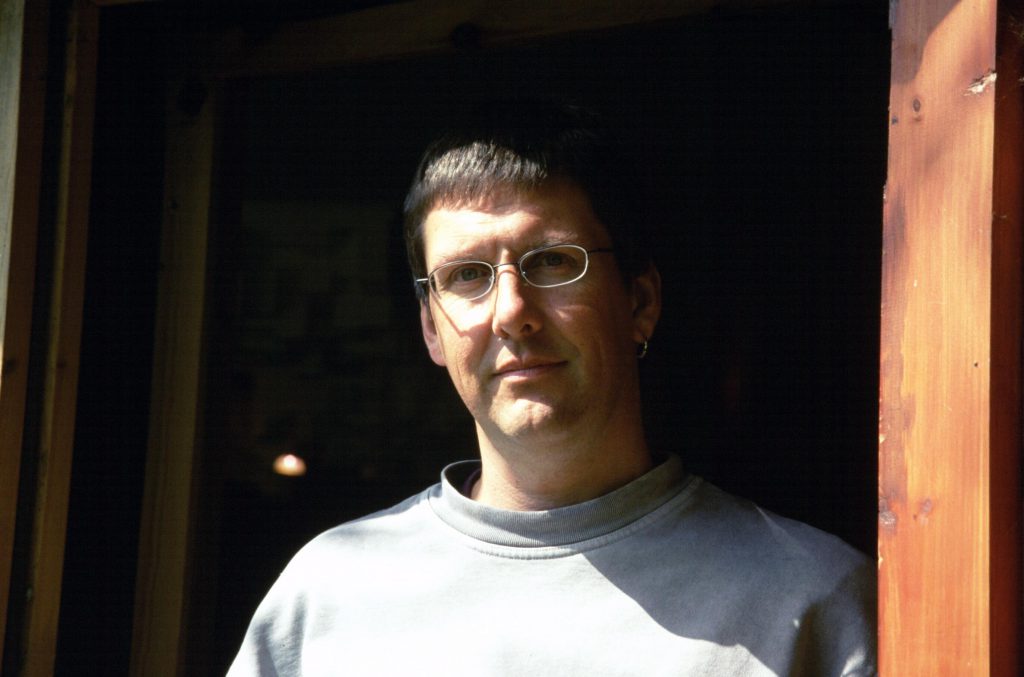
Toby in the doorway of his studio


